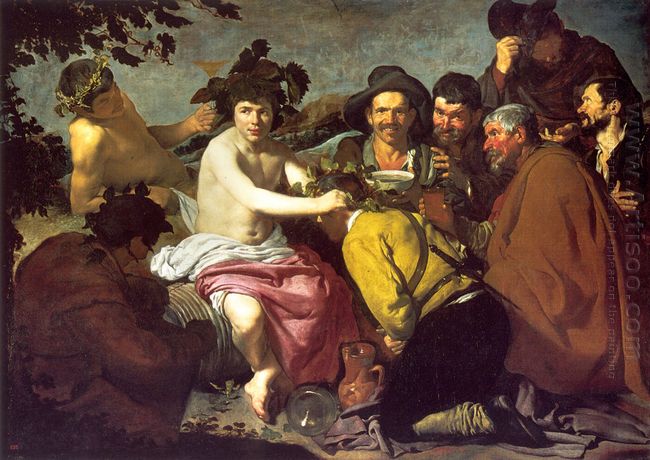The earliest Triumph of Bacchus during Renaissance was the statue made by Italian Michelangelo in 1496. The Spanish
Triumph Of Bacchus was based on the Roman mythology. Bacchus was Dionysus in Greek mythology. According to the legend, he pioneered the use of grape wine, and spread the methods of the grape growing and honey gathering to the whole world. But Velazquez used the Spanish peasant image and its way of life to represent this scene. These figures wore the hat and the thick coat and were drinking in high spirit. They were saluting to the young bacchus. The bacchus was half naked and wearing a hat with wings and giving a person back to the audience with flowers. His eyes were squinting out of this Baroque painting. There was only the optimistic life and farmer’s enthusiastic character. There was no the bacchus in the legend. All of this was just a life scene that the Spanish farmers drank during rest. Appreciation of this painting made people reminiscent of the humorous philosophical spirit described in Cervantes in his “Autobiography of Don Quixote”.